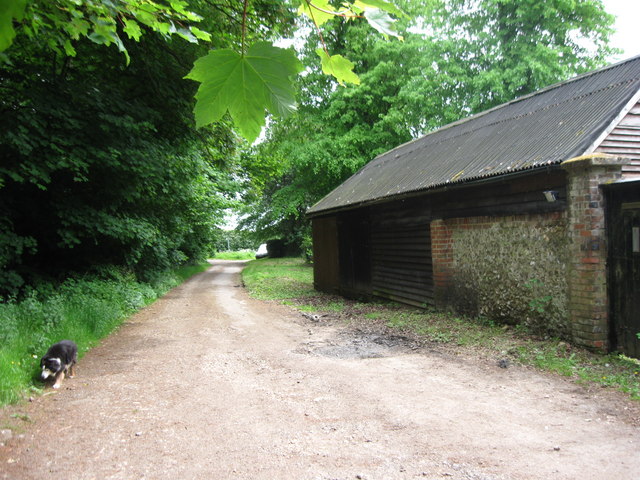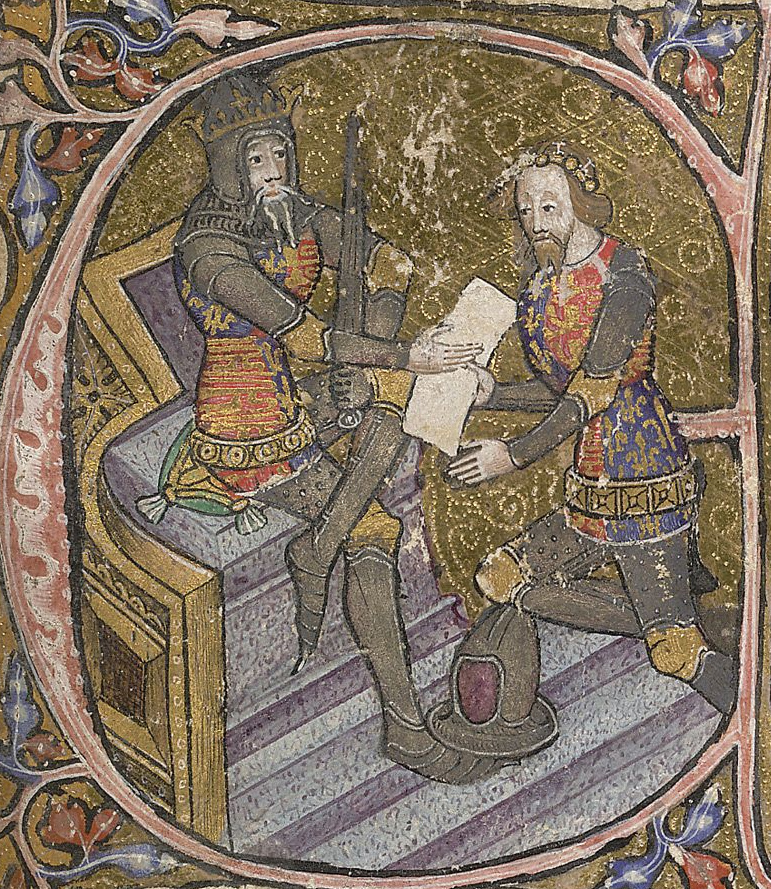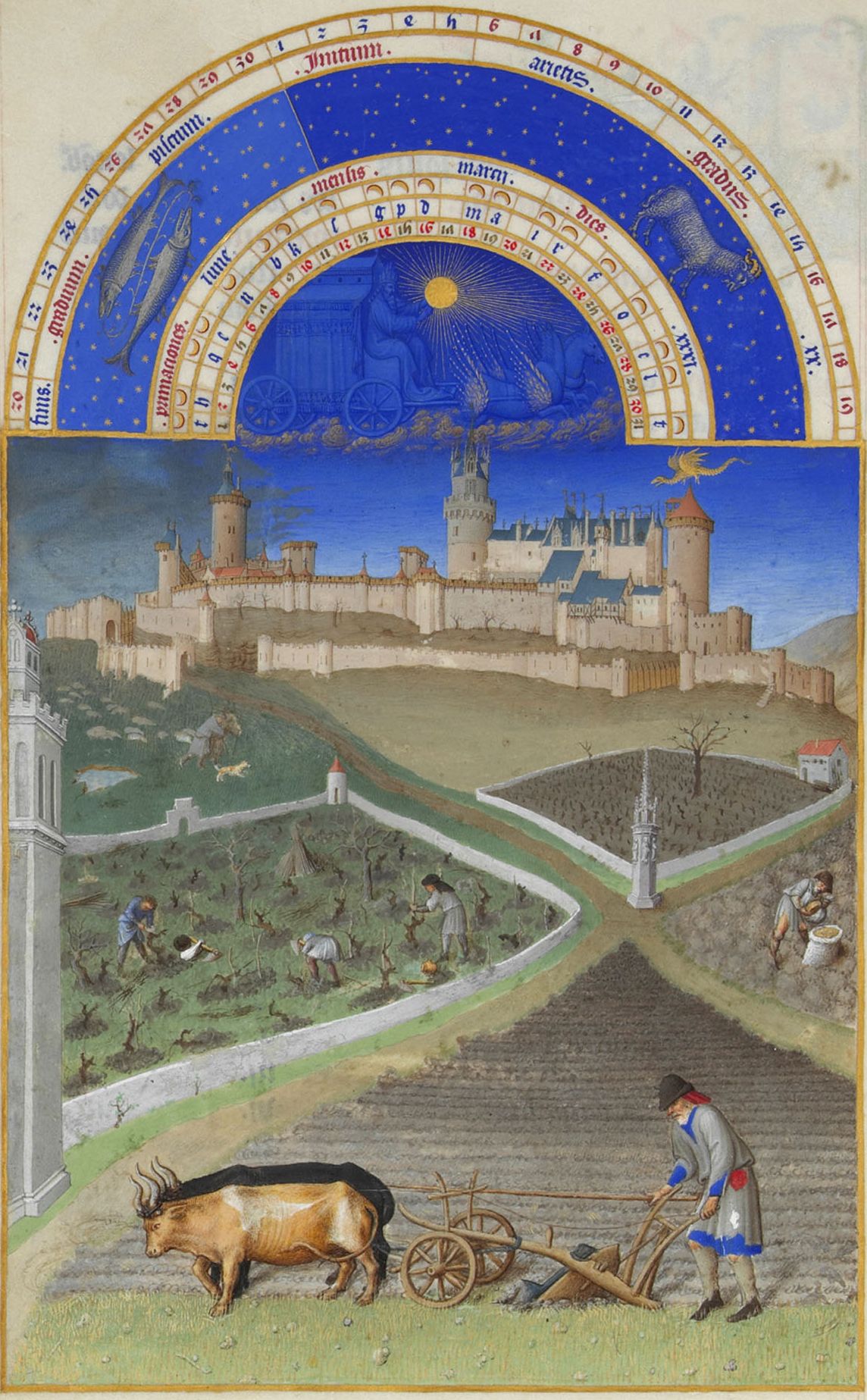|
Chivery
Chivery is a hamlet located in the Chiltern Hills in the present day parish of Aston Clinton, in Aylesbury Vale District in the county of Buckinghamshire, England. Chivery's southern boundary is formed by the ancient earthworks known as Grim's Ditch. To the north it is bounded by Wendover Woods. Historically Chivery was part of the manor of Aston Clinton. It was created at the end of the 12th century when William de Clinton created the manor of Aston Chiverey provided a dowry for his daughter Alice who married Reginald de Mohun. On his death in 1213 Alice married Robert de Beauchamp. From 1250 until around 1380 the manor was held by the Audley family until through marriage it passed to John Rose, an esquire of Richard II of England. By 1410 in Henry IV's reign it had passed to the Crown before being recovered by John Rose's descendant Thomas St Clair. Thomas' lands were divided on his death in 1483 and his daughter Eleanor inherited the manor of Aston Chiverey and through m ... [...More Info...] [...Related Items...] OR: [Wikipedia] [Google] [Baidu] |
Aston Clinton
Aston Clinton is a historic village and civil parish in the Vale of Aylesbury in Buckinghamshire, England. The village lies at the foot of the Chiltern Hills, between the Wendover and Aylesbury arms of the Grand Union Canal. Surrounding towns include Wendover to the south, Aylesbury to the west, and Tring to the east - across the nearby county border with Hertfordshire. History It is believed that the village started at the crossing of two Roman roads, Akeman Street and Icknield Way, both of which are still main roads in the village. After the fall of the Roman Empire, it became a Saxon settlement and remains of a Saxon cemetery were found during the construction of the Aston Clinton Bypass. Before the Norman conquest of England in 1066 the settlement was probably held under patronage of King Edward the Confessor. The village is recorded in the Domesday Book of 1086 where in Old English it was called ''Estone'', which means "eastern estate". The manor, later to be known as ... [...More Info...] [...Related Items...] OR: [Wikipedia] [Google] [Baidu] |
Barn By The Ridgeway At Chivery - Geograph
A barn is an agricultural building usually on farms and used for various purposes. In North America, a barn refers to structures that house livestock, including cattle and horses, as well as equipment and fodder, and often grain.Allen G. Noble, ''Traditional Buildings: A Global Survey of Structural Forms and Cultural Functions'' (New York: Tauris, 2007), 30. As a result, the term barn is often qualified e.g. tobacco barn, dairy barn, cow house, sheep barn, potato barn. In the British Isles, the term barn is restricted mainly to storage structures for unthreshed cereals and fodder, the terms byre or shippon being applied to cow shelters, whereas horses are kept in buildings known as stables. In mainland Europe, however, barns were often part of integrated structures known as byre-dwellings (or housebarns in US literature). In addition, barns may be used for equipment storage, as a covered workplace, and for activities such as threshing. Etymology The word ''barn'' comes ... [...More Info...] [...Related Items...] OR: [Wikipedia] [Google] [Baidu] |
Richard II Of England
Richard II (6 January 1367 – ), also known as Richard of Bordeaux, was King of England from 1377 until he was deposed in 1399. He was the son of Edward the Black Prince, Prince of Wales, and Joan, Countess of Kent. Richard's father died in 1376, leaving Richard as heir apparent to his grandfather, King Edward III; upon the latter's death, the 10-year-old Richard succeeded to the throne. During Richard's first years as king, government was in the hands of a series of regency councils, influenced by Richard's uncles John of Gaunt and Thomas of Woodstock. England then faced various problems, most notably the Hundred Years' War. A major challenge of the reign was the Peasants' Revolt in 1381, and the young king played a central part in the successful suppression of this crisis. Less warlike than either his father or grandfather, he sought to bring an end to the Hundred Years' War. A firm believer in the royal prerogative, Richard restrained the power of the aristocracy and r ... [...More Info...] [...Related Items...] OR: [Wikipedia] [Google] [Baidu] |
Cholesbury-cum-St Leonards
Cholesbury-cum-St Leonards is a civil parish in the Chiltern district of the English county of Buckinghamshire. It lies in the Chiltern Hills just to the north of Chesham, on the boundary with Hertfordshire. It comprises the hamlet of Buckland Common, and the villages of Cholesbury, Hawridge and St Leonards (with Lane Ends hamlet) which were brought together as part of the local government reorganisation in April 1934. The parish has since increased in size through the annexing of additional parcels of land which previously were part of Chesham, Ashley Green and Drayton Beauchamp. History In common with many other villages close to the scarp of the Chiltern Hills, the parishes formed from the ancient manors and estates ran from the fertile Vale of Aylesbury up the step wooded slope onto the Chiltern plateau and dip slope. They are collectively known by the social geographic term of strip parishes. Over time the upland communities, which had originally been temporary o ... [...More Info...] [...Related Items...] OR: [Wikipedia] [Google] [Baidu] |
St Leonards, Buckinghamshire
St Leonards is a small village in the Chiltern Hills in Buckinghamshire, England. It is 3 miles east of Wendover and 4 miles south of Tring, Hertfordshire. A short section of Grim's Ditch delineates the northern end of the village, which lies within the civil parish of Cholesbury-cum-St Leonards. Early history Prehistoric The earliest evidence of habitation is indicated by a short section of the Chiltern Grim's Ditch linear earthwork, which is believed to have been constructed during the Iron Age. Though what remains is eroded and poorly preserved a ditch and bank are still visible. There are also examples of pottery shards, possibly associated with a small Iron Age bloomery found in a brick-earth quarry and iron slag (at Newsetts Wood) indicating there was a significant community living in the area close to the present-day Dundridge Manor. [...More Info...] [...Related Items...] OR: [Wikipedia] [Google] [Baidu] |
Henry VIII
Henry VIII (28 June 149128 January 1547) was King of England from 22 April 1509 until his death in 1547. Henry is best known for his six marriages, and for his efforts to have his first marriage (to Catherine of Aragon) annulled. His disagreement with Pope Clement VII about such an annulment led Henry to initiate the English Reformation, separating the Church of England from papal authority. He appointed himself Supreme Head of the Church of England and dissolved convents and monasteries, for which he was excommunicated by the pope. Henry is also known as "the father of the Royal Navy" as he invested heavily in the navy and increased its size from a few to more than 50 ships, and established the Navy Board. Domestically, Henry is known for his radical changes to the English Constitution, ushering in the theory of the divine right of kings in opposition to papal supremacy. He also greatly expanded royal power during his reign. He frequently used charges of treason and ... [...More Info...] [...Related Items...] OR: [Wikipedia] [Google] [Baidu] |
Margaret Pole, 8th Countess Of Salisbury
Margaret Plantagenet, Countess of Salisbury (14 August 1473 – 27 May 1541), also called Margaret Pole, as a result of her marriage to Sir Richard Pole, was the only surviving daughter of George Plantagenet, Duke of Clarence, a brother of Kings Edward IV and Richard III (all sons of Richard Plantagenet, 3rd Duke of York), by his wife Isabel Neville. Margaret was one of just two women in 16th-century England to be a peeress in her own right ('' suo jure'') without a husband in the House of Lords. As one of the few members of the House of Plantagenet to have survived the Wars of the Roses, she was executed in 1541 at the command of King Henry VIII, the second monarch of the House of Tudor, who was the son of her first cousin Elizabeth of York. Pope Leo XIII beatified her as a martyr for the Roman Catholic Church on 29 December 1886. Early life Margaret was born at Farleigh Castle in Somerset, the only surviving daughter of George Plantagenet, Duke of Clarence, and his ... [...More Info...] [...Related Items...] OR: [Wikipedia] [Google] [Baidu] |
John Gage (Tudor Politician)
Sir John Gage KG (28 October 1479 – 18 April 1556) was an English courtier during the Tudor period. He held a number of offices, including Chancellor of the Duchy of Lancaster (1542–1547), Comptroller of the Household (1540–1547), Constable of the Tower (1540–1556) and Lord Chamberlain (1553–1556). Early life and family John Gage was born on 28 October 1479 at Burstow manor in Surrey and baptized at the parish church there on the same day. He was the only son of William Gage and Agnes Bolney. He married Philippa Guildford, daughter of Sir Richard Guildford, on 14 April 1502. They were the parents of eight children: * Sir Edward Gage - married Elizabeth, daughter of John Parker and also Joan, daughter of Sir Richard Sackville. * James Gage - married Jane, daughter of James Delves and widow of John Bellingham. * Robert Gage - married Elizabeth, daughter of Nicholas Wilford. * William Gage - died without issue. * Alice Gage – married Sir Anthony Browne Jr. * ... [...More Info...] [...Related Items...] OR: [Wikipedia] [Google] [Baidu] |
Henry IV Of England
Henry IV ( April 1367 – 20 March 1413), also known as Henry Bolingbroke, was King of England from 1399 to 1413. He asserted the claim of his grandfather King Edward III, a maternal grandson of Philip IV of France, to the Kingdom of France. Henry was the first English ruler since the Norman Conquest, over three hundred years prior, whose mother tongue was English rather than French. Henry was the son of John of Gaunt, Duke of Lancaster, himself the son of Edward III. John of Gaunt was a power in England during the reign of Henry's cousin Richard II. Henry was involved in the revolt of the Lords Appellant against Richard in 1388, resulting in his exile. After John died in 1399, Richard blocked Henry's inheritance of his father's duchy. That year, Henry rallied a group of supporters, overthrew and imprisoned Richard II, and usurped the throne, actions that later would lead to what is termed the Wars of the Roses and a more stabilized monarchy. As king, Henry faced a ... [...More Info...] [...Related Items...] OR: [Wikipedia] [Google] [Baidu] |
Manorialism
Manorialism, also known as the manor system or manorial system, was the method of land ownership (or " tenure") in parts of Europe, notably France and later England, during the Middle Ages. Its defining features included a large, sometimes fortified manor house in which the lord of the manor and his dependents lived and administered a rural estate, and a population of labourers who worked the surrounding land to support themselves and the lord. These labourers fulfilled their obligations with labour time or in-kind produce at first, and later by cash payment as commercial activity increased. Manorialism is sometimes included as part of the feudal system. Manorialism originated in the Roman villa system of the Late Roman Empire, and was widely practiced in medieval western Europe and parts of central Europe. An essential element of feudal society, manorialism was slowly replaced by the advent of a money-based market economy and new forms of agrarian contract. In examining ... [...More Info...] [...Related Items...] OR: [Wikipedia] [Google] [Baidu] |
Esquire
Esquire (, ; abbreviated Esq.) is usually a courtesy title. In the United Kingdom, ''esquire'' historically was a title of respect accorded to men of higher social rank, particularly members of the landed gentry above the rank of gentleman and below the rank of knight. Some sources cite that the title was bestowed on "candidates for knighthood in England," and even used with respect to other dignitaries, such as justices of the peace, sheriffs, and sergeants. According to research by a New York City Bar Association committee, in the United States, esquire over time came to refer "commonly and exclusively" to lawyers, but how that happened is unclear. The only certainty, the committee stated, is that "based on common usage it is fair to state that if the title appears after a person’s name, that person may be presumed to be a lawyer". The 1826 edition of William Blackstone's '' Commentaries on the Laws of England'' reiterated that "the title should be limited to those on ... [...More Info...] [...Related Items...] OR: [Wikipedia] [Google] [Baidu] |
Hamlet (place)
A hamlet is a human settlement that is smaller than a town or village. Its size relative to a parish can depend on the administration and region. A hamlet may be considered to be a smaller settlement or subdivision or satellite entity to a larger settlement. The word and concept of a hamlet has roots in the Anglo-Norman settlement of England, where the old French ' came to apply to small human settlements. Etymology The word comes from Anglo-Norman ', corresponding to Old French ', the diminutive of Old French ' meaning a little village. This, in turn, is a diminutive of Old French ', possibly borrowed from ( West Germanic) Franconian languages. Compare with modern French ', Dutch ', Frisian ', German ', Old English ' and Modern English ''home''. By country Afghanistan In Afghanistan, the counterpart of the hamlet is the qala ( Dari: قلعه, Pashto: کلي) meaning "fort" or "hamlet". The Afghan ''qala'' is a fortified group of houses, generally with its ... [...More Info...] [...Related Items...] OR: [Wikipedia] [Google] [Baidu] |










